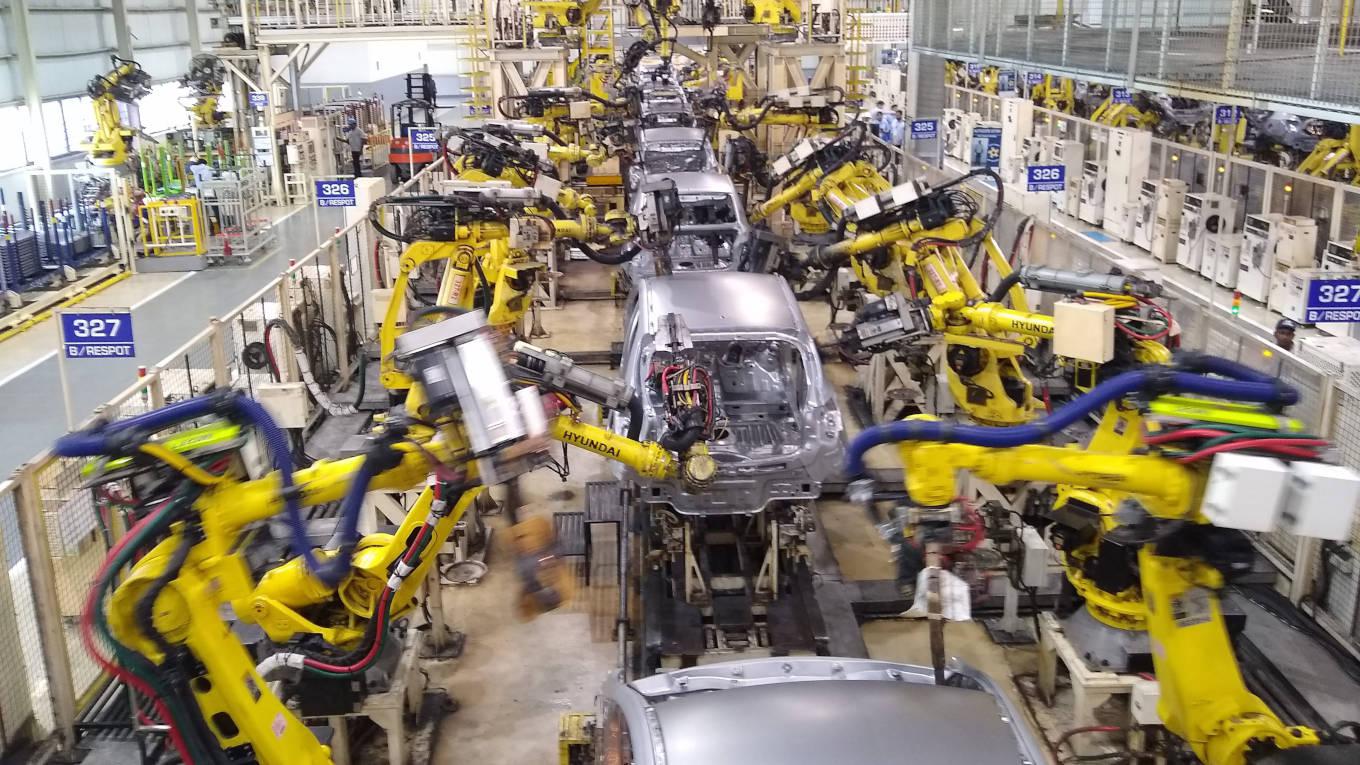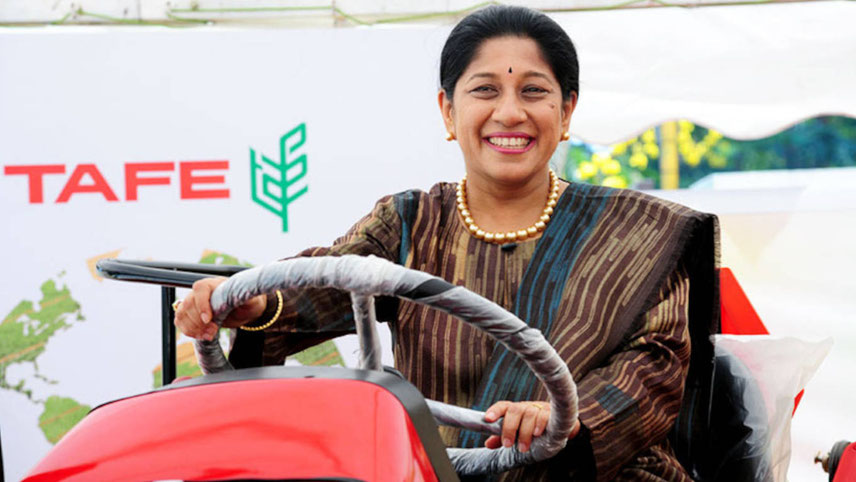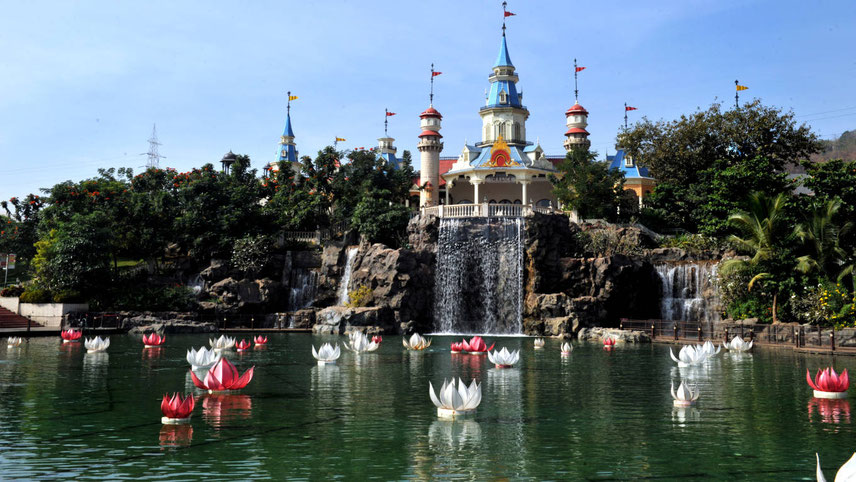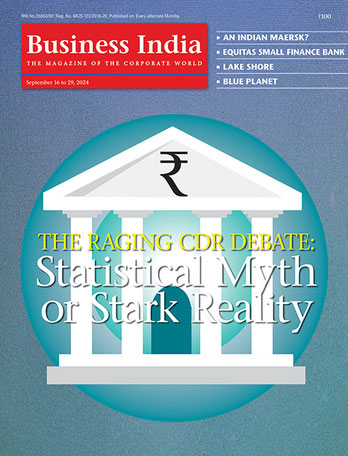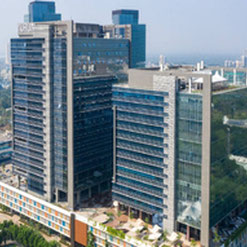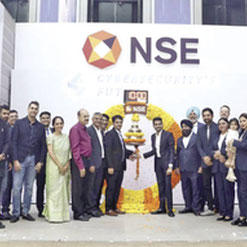-
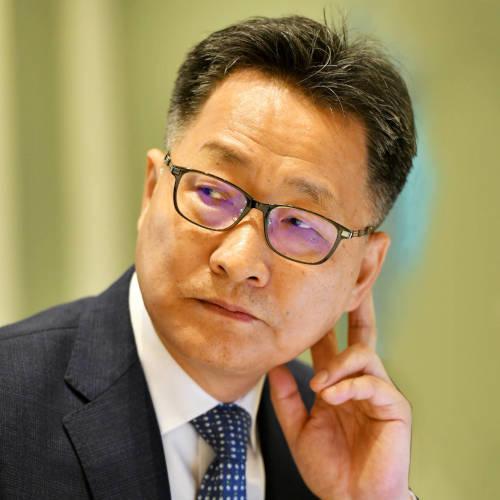
Kim: looking beyond for the progress of humanity; Photo: Sanjay Borade
During Fiscal 2024, the growth momentum of the Indian auto industry continued, albeit at a slower pace, backed by continued traction in the SUV segment, intermittent launches, and an improvement in disposable income. Off the high base of Fiscal 2023, the industry grew by 8.4 per cent in Fiscal 2024 to reach a historic high of 4.2 million units. During Q1 FY25, the industry witnessed a million-vehicle offtake, an approximately 3 per cent year-on-year increase. Hatchbacks continued to remain under pressure, while the SUV and MPV segments primarily drove industry growth.
The Indian auto industry has witnessed a CAGR of ~5 per cent over both a five-year and 10-year basis, largely driven by higher-segment cars with premium features (SUVs). With OEMs looking to increase the software/technology content of vehicles further in the coming years, coupled with a slew of EVs planned for the market, the industry’s growth looks set to come from the premium segment of cars. CRISIL expects the CAGR to be in the range of 4.5 to 6.5 per cent for the next five years
Hyundai Motor Company’s (HMC) global ecosystem gives HMIL a strategic and competitive advantage. HMC’s technology prowess and R&D give HMIL early access to the latest global trends, leading to a shorter time to market. HMC has invested an aggregate amount of R1,87,503 crore ($26.04 billion) towards global R&D from CY2014 to 30 June 2024, including in emerging mobility areas such as electrification, shared mobility, and autonomous driving. HMC has made a cumulative investment of over $26 billion in global R&D. HMC’s global platform provides access to export opportunities and best-in-class practices and processes. HMC’s sales network spans more than 190 countries.
HMIL has been the second-largest auto OEM in the Indian passenger vehicle market since Fiscal 2009 (in terms of domestic sales volumes), according to a CRISIL report. HMIL has been India’s second-largest exporter of passenger vehicles from 1 April 2021 through 30 June 2024. Since 1998, and up to 30 June 2024, HMIL has cumulatively sold more than 12 million units of passenger vehicles in India and through exports. In CY2023, HMIL was among the top three contributors to HMC’s global sales volumes, and its contribution to HMC’s sales volumes has increased from 15.48 per cent in CY2018 to 18.19 per cent in CY2023.
HMIL’s business model is founded on several fundamental pillars, such as the strong parentage of the Hyundai Motor Group brand; advanced technology; localisation; and a win-win approach for all stakeholders and partners, such as customers, dealers, suppliers, employees, the environment, and the community. It identifies emerging market trends and latent customer needs and aspirations based on its local network and HMC’s global network, along with in-depth market and product research.
With over 2,900 touchpoints, Indian customers can browse, test drive, and purchase a passenger vehicle through the network of 1,377 sales outlets operated by HMIL’s dealers across 1,036 cities and towns in India as of 30 June 2024, or purchase through the ‘Click to Buy’ section on its website or ‘myHyundai’ app. For after-sale services of their passenger vehicles, customers can access its network of 1,561 service centres operated by its dealers across 957 cities and towns in India as of 30 June 2024. As per the CRISIL Report, HMIL’s sales and service network was the second largest in India in terms of the number of customer touchpoints as of 31 March 2024.
-
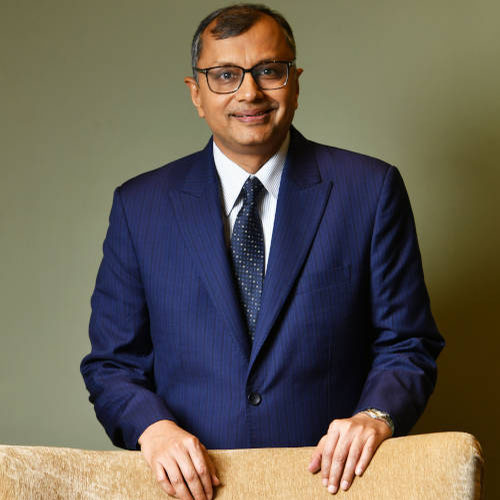
Garg: garnering trust and loyalty; Photo: Sanjay Borade
Pioneer innovator
Hyundai Motor India has been at the forefront of several innovations in the industry. During their early years, they were the first player to introduce the Santro with a ‘tall boy’ hatchback design that offered better headroom and seating height compared to other available hatchbacks in the market at that time. They were also amongst the first to introduce CRDi diesel engine technology in India.
HMIL was the first mass market OEM to introduce power steering in India by providing the option for their Santro model in 2006. They also introduced the Kona EV in 2019, which was India’s first long-range EV (452 km Automotive Research Association of India {ARAI} range) by a mass market player in the less than Rs30 lakh price bracket.
HMIL has consistently been the largest auto OEM in India by sales volume in the mid-size SUV sub-segment from Fiscal 2019 to the three months ended 30 June 2024. Their 2016 India Car of the Year (ICOTY) awardee, Creta, had a market share of 38 per cent in the mid-size SUV sub-segment in the three months ended 30 June 2024. Further, Verna was the top-selling model in the premium sedans sub-segment in Fiscal 2024, and Aura was the second highest selling model in the sedan segment with a 15 per cent market share in the three months ended 30 June 2024, according to the CRISIL Report.
“As a result of our consistent scale and leadership, we believe that we have garnered trust and loyalty for the Hyundai brand among existing and potential customers in India. Our scale and leadership position also gives us the ability to attract new dealers and derive economies of scale in sourcing and manufacturing operations,” says Tarun Garg, Whole-time Director and COO, HMIL.
They also introduced the Ioniq 5, which was amongst the first premium EVs (greater than R30 lakh price bracket) launched in India by a mass market player. They were also amongst the early players to launch connected car technology via Bluelink and have been responsible for introducing a slew of new-age features in their portfolio, like Daytime Running Lights (DRLs), an Air Purifier, and a Dash Cam with recording capability. Further, they were also the first to introduce a panoramic sunroof in the mid-size SUV segment.
Hyundai Verna has obtained a 5-star rating according to the most recent criteria set by Global NCAP in 2023. The Verna was assessed in its most basic passive safety specification, with 6 airbags and ESC as standard. The model achieved a five-star rating for adult and child occupants.
In a 2022 publication by Global NCAP, Hyundai i20 (2 airbags) and Hyundai Creta (2 airbags) obtained a three-star rating. Hyundai Motor India is the first mass market OEM in India to standardise six airbags across all its models and variants under its ‘safety-for-all’ mission in October 2023. Apart from that, Hyundai Motor India has also standardised three-point seatbelts and seatbelt reminders as standard safety features across all variants.
An eminent auto industry expert points out that HMIL’s right to win is democratising access through innovation, wherein it offers something for everyone. Hyundai is an award-winning brand with a track record of leadership. HMIL has a win-win approach across stakeholders. It has flexible, localised, and automated manufacturing. It has a future-ready orientation. It has been delivering growth at scale with industry-leading profitability and returns.
-
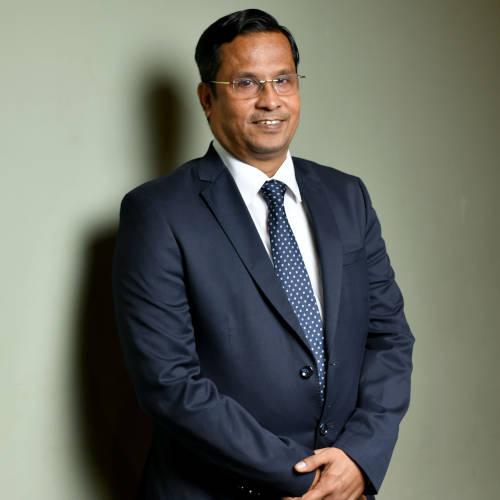
Gopalakrishnan: expanding our manufacturing capabilities
HMG has invested Rs30,103 crore ($5.09 billion) in India operations (as of 30 June 2024) in tangible fixed assets and capital work in progress. “With the support from HMC, we have built the first and second-largest manufacturing and supply chain ecosystem within the Hyundai Motor Group outside Hyundai’s home country, Korea. We believe that our large network of suppliers, dealers, and other key stakeholders has helped create multiple job opportunities across the OEM value chain in India. We serve as a production and export hub for emerging markets for HMC, particularly for passenger vehicle models such as Verna and Venue,” says Kim. The new initiatives involve an investment commitment from our company of approximately Rs32,000 crore in aggregate, adds Kim.
Gopalakrishnan CS, Whole-time Director and CMO, says: “Our Chennai manufacturing plant had an annual production capacity of 824,000 units as of 30 June 2024. We are expanding our manufacturing capabilities in India with the recent acquisition of a manufacturing plant in Talegaon, Maharashtra, which is expected to commence commercial operations partly in the second half of Fiscal 2026. We expect our annual production capacity across the Chennai and Talegaon manufacturing plants in aggregate to increase to 994,000 units when Talegaon is partly operational and to 1,074,000 units once Talegaon is fully operational.”
In line with their commitment to India, HMIL is taking steps to develop an EV supply chain and manufacturing capabilities in India through EV parts localisation and developing an EV platform in India. HMIL is undertaking research and development on cost-effective green hydrogen energy in collaboration with the nodal agency for investment promotion of the Government of Tamil Nadu and IIT Madras. Pursuant to an arrangement with the Government of Tamil Nadu dated January 2024 for the development of EV manufacturing infrastructure in the state, HMIL may receive incentives and subsidies from the Government of Tamil Nadu upon entering into a separate memorandum of understanding in this regard.
For the Talegaon plant, which is yet to commence operations, they received offer letters from the Government of Maharashtra in November 2023 and March 2024, under which it is required to make a fixed capital investment of R6,000 crore in fixed assets to avail incentives such as (a) an industrial promotion subsidy equivalent to 100 per cent of the fixed capital investment in Talegaon made within a period of 7 years from 1 April 2023 by way of a refund of 100 per cent of the SGST payable in the state of Maharashtra on sales of cars and parts manufactured and sold in Maharashtra, within a period of 20 years; electricity duty exemption for a period of 15 years from the date of commencement of commercial production; and a 50 per cent exemption from payment of stamp duty on the assignment of land lease.
EV strategy
HMIL’s calibrated EV strategy includes the launch of innovative models backed by the localisation of the EV supply chain. HMIL’s overall PV strategy and specific EV strategy have revolved around the thesis of launching the ‘right product at the right time’, and this approach has worked successfully for the company. “HMIL has access to HMC’s global EV and battery technology, and our strategy will be more localised, catering to the needs of Indian customers,” says Garg.
-

Wangdo Hur: best-in-class margins
HMIL plans to launch 4 EV models across the mass volume/mass premium segment (with the first local EV model, Creta EV, expected in Q4 FY 2025). “In line with our commitment to India, we are taking steps to develop an EV supply chain and secure manufacturing capabilities for key parts, including battery packs, cells, power electronics, and drivetrains. For localising battery cell production, HMIL is collaborating with an Indian local partner to establish local production and supply-chain capabilities.”
HMIL focuses on the continued premiumisation of its passenger vehicle portfolio. It has a premiumisation strategy that centres on selling passenger vehicles with a higher average selling price (ASP) for the respective models. With a growing share of younger buyers in India, there is an increasing awareness and preference for parameters other than price, such as exterior and interior design, driving experience, safety, advanced features, and aesthetics.
This trend has resulted in inter-segmental shifts towards SUVs and intra-segmental shifts towards mid- to top-end variants. This is demonstrated by the growing ASP of passenger vehicles in India, which increased at a CAGR of 7-9 per cent between Fiscal 2019 and Fiscal 2024, according to the CRISIL Report. In line with this trend, the contribution of passenger vehicles with an ex-showroom ASP of greater than Rs10 lakh to its domestic sales has increased from 43.42 per cent in Fiscal 2022 to 48.55 per cent in Fiscal 2024, and was 46.86 per cent in the three months ended 30 June 2024.
Similarly, the contribution of passenger vehicles with an ex-showroom ASP of greater than R15 lakh to HMIL’s domestic sales has risen from 13.93 per cent in Fiscal 2022 to 19.81 per cent in Fiscal 2024, and was 21.53 per cent in the three months ended 30 June 2024. Further, HMIL consistently achieves SUV sales contributions that surpass the industry level by sales volumes in units.
In Fiscal 2022, Fiscal 2024, and the three months ended 30 June 2024, the contribution of SUV sales volume to total passenger vehicle sales volumes in India was 41.1 per cent, 51.2 per cent, and 53.5 per cent, respectively, according to the CRISIL Report. On the other hand, HMIL’s domestic SUV sales volumes accounted for 52.01 per cent, 63.24 per cent, and 67.41 per cent of total domestic sales volumes in Fiscals 2022, 2024, and the three months ended 30 June 2024, respectively. “We intend to bolster our sales in the SUV segment and mid- to high-range passenger vehicles in other segments through targeted passenger vehicle introductions across price points and powertrains,” says Kim, adding: “We may also explore vehicle leasing to offer last-mile connectivity.”
HMIL intends to leverage local manufacturing capabilities to establish itself as HMC’s largest foreign production base in Asia. It aims to become an export hub for HMC, focusing on exports to emerging markets, including South Asia, Latin America, Africa, and the Middle East, with the potential to export to other global markets.
“Our aim is to be the global manufacturer and supplier of cost-optimised passenger vehicles, including the Grand i10 NIOS, i20, Aura, Venue, Verna, Creta, and Alcazar. We also intend to collaborate with our stakeholders in export countries using innovative sales strategies,” explains Kim.
-
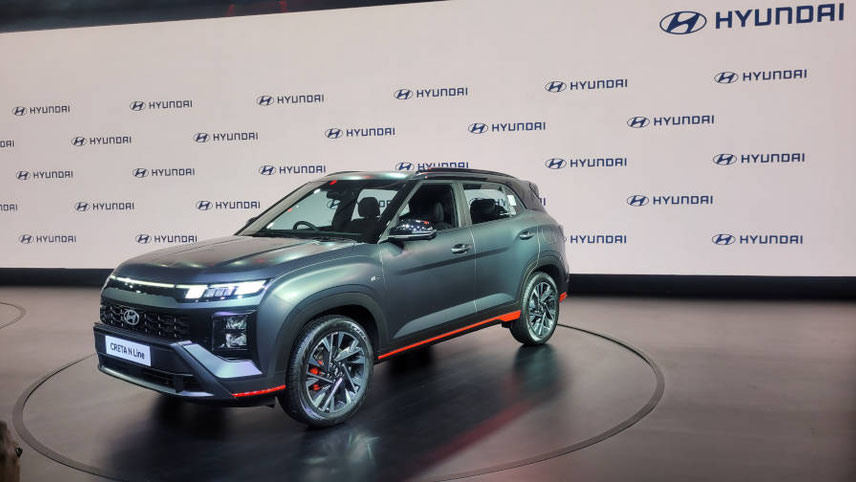
For example, to benefit from incentives offered by Nepal, HMIL recently collaborated with a distributor in Nepal to establish a local passenger vehicle assembly line, agreeing to provide materials and parts for the assembly of the Venue passenger vehicle model.
HMIL intends to further increase its customer base by tapping into new markets in India, such as rural, Tier-2, and Tier-3 towns, to meet customer demands. “We intend to continue deepening our dealer network across India. With the expanding road infrastructure in India, we have been growing our presence in rural areas by engaging with our existing dealers to expand their operations, as well as onboarding new dealers,” avers Garg.
HMIL is also taking steps to enhance allied businesses, such as pre-owned passenger vehicle sales, conducting benchmarking studies, and sharing best practices with dealers to boost efficiency and provide more business opportunities for them. Furthermore, HMIL intends to focus on sustainability at dealer showrooms. For example, it now encourages some dealers to install solar power panels at their showrooms and service centres and offers the option of dry washing for customers to clean their vehicles.
Regarding financials for FY24, HMIL had revenue from operations of around R70,000 crore. Its EBITDA margin was 13 per cent, with consistent growth reflected in a 13 per cent CAGR growth in sales volume from FY22 to FY24 and a 21 per cent CAGR growth in revenues during the same period. It posted a 7 per cent CAGR growth in ASP from FY22 to FY24.
“HMIL’s financial discipline results in efficiency and cost leadership. HMIL has one of the best-in-class margins and an industry-leading RoCE profile,” says Wangdo Hur, Whole-Time Director and CFO of HMIL, adding, “HMIL is a unique combination of profitable growth, scale, capital efficiency, and returns.”
Listing and valuation
HMIL has been performing well in India for more than 26 years and is the second-largest passenger vehicle OEM in India. Kim asserts: “We believe that now is the ‘right time’ for us to take a step forward to further Indianise our operations and become a ‘home brand, most trusted brand’ in India. The IPO will ensure that HMIL is even more committed to success in India as we continue to pursue global standards and practices in terms of governance.” Additionally, the IPO will provide an opportunity for local and global investors to participate in HMIL’s growth story.
IPO market and financial analysts point out that the premium valuation commanded by HMIL relates to the Indian auto sector, which is attractive, sizeable, and high growth. The industry is expected to grow between 4.5 and 6.5 per cent from FY24 to FY29 (CAGR), reaching 5.2 to 5.7 million in domestic sales volumes (as per CRISIL).
HMIL has a strong global parentage in HMG and HMC, with HMIL being among the top three contributors to HMC’s PV sales volumes. HMIL has access to R&D, technology, platform, brand, and support across operations from HMC.
-
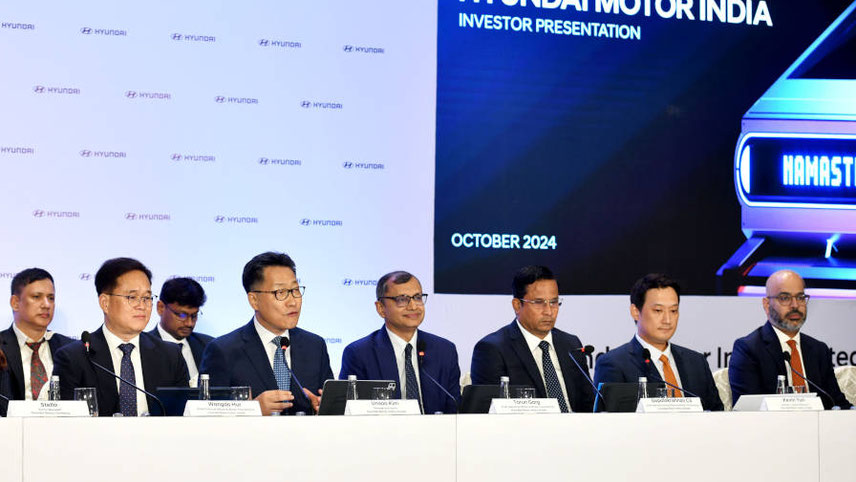
The Hyundai top brass announcing the launch of the largest-ever IPO in India
HMIL has consistently been the second-largest auto OEM in India since FY09 (by domestic sales volumes). It has been the largest auto OEM in the Indian mid-size SUV segment since FY19 and the largest exporter of passenger vehicles from FY05 to 11MFY24. HMIL has a diverse, premium product portfolio across powertrains, commanding higher average selling prices (ASP). It has a portfolio of 13 models across major PV segments, powertrains, and body types. There is a clear game plan for EVs with the near-term introduction of the Creta EV (in terms of readiness versus Maruti).
HMIL has the ability to promptly identify emerging trends and introduce innovative vehicles backed by advanced technology. It has a strong track record of innovations (eg, Santro, Bluelink, Smartsense, Click-to-Buy, etc.).
The “Hyundai” brand is trusted and has received the highest number of Indian Car of the Year awards among Indian OEMs to date. It was the 32nd most valuable brand globally in 2023, up three places from 2022. HMIL has flexible and automated manufacturing capabilities with a focus on localisation. The Chennai plant has an annual production capacity of 824,000 (as of FY2024) and is optimised to manufacture one PV every 30 seconds. It has a localised supply chain, with the majority of parts and materials sourced from suppliers based in India.
HMIL has a track record of stellar profitable growth driven by premiumisation and an aggressive SUV strategy, coupled with an excellent growth outlook given the ramping up of the new plant and the incorporation of EVs and hybrids. It boasts a best-in-class operating margin profile (potentially higher margins on an ex-after sales basis) and a track record of disciplined capital allocation, resulting in superior ROCE.
